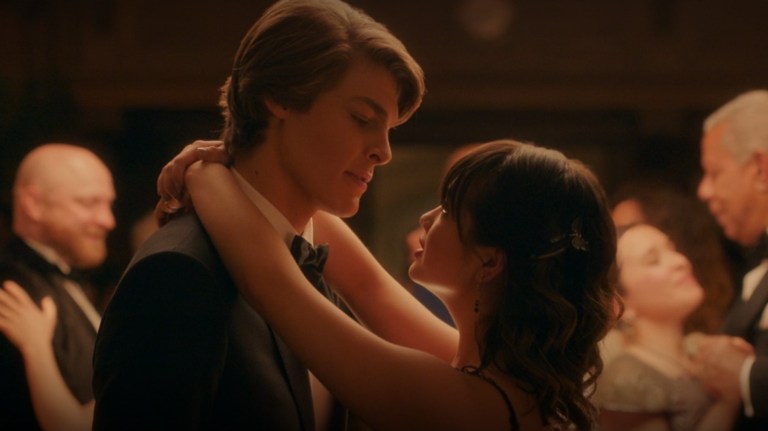Tattooed Confessions
It was a time when tattoos were still rare acts of defiance instead of thoughtless rites of passage now considered almost tasteless and passé. I wanted to make some kind of commitment, a statement of permanence, a badge of courage, an evidence of my tolerance for pain. I wanted to be a grownup, sure enough…

He didn’t lie when he said it would hurt. It reminded me of how nurses and doctors promised otherwise when they gave children shots. At a makeshift tattoo parlor in a doorless house, the artist drew on my lower spine the initial sketches of a design with a skipping blue Bic pen. He took a drag from his cigarette, wiped off my sweat with a piece of gauze, and started inking.
I was eighteen, or so I was asked to say in a place I wasn’t supposed to be. The original plan was to watch my boyfriend get his second tat, an elaborate and colorful rendition of a skull-faced jester’s head letting out a scornful laugh. It was to go on his left arm to match the scorpion on his right. The older one was an ode to The Turtle And The Scorpion story Forest Whitaker’s character told in The Crying Game. It was obvious that he was transforming his body into a confessional: the scorpion representing the weakness of his will, the jester his capacity to tell the subtlest and most humorous lies.
The images were reminders to himself and his warnings for innocent passersby. In his arms I might have more than once felt secure, but always through cracks of light from a flimsy door, or blatantly in harsh, tropical sunlight, were his disclaimers – Number One, I am a slave to my nature; and Number Two, I jest – so you’d best be warned.
Except that at seventeen they both just looked so cool. It was a time when tattoos were still rare acts of defiance instead of thoughtless rites of passage now considered almost tasteless and passé. I wanted to make some kind of commitment, a statement of permanence, a badge of courage, an evidence of my tolerance for pain. I wanted to be a grownup, sure enough about myself to sit there among strange men and their tobacco, and actually take home a piece of their unpopular, devious art on my reckless, virgin skin.
My shirt was modestly tucked into the strap of my bra to keep it up and away from the artwork in progress. I cringed at the solid, repetitive buzzing scratches on my back as I watched the jester take shape, picking up color using flat chisel-like needles to fill in the shades of its purple bejangled hat. When asked, I said I was okay with only a slight break in my voice. Jay was many years older and knew the ins and outs of the narrow alleyways leading to that house, mature enough to say hello to the artist’s wife as a courtesy, even picking up their son briefly to remark how big he had gotten since they saw each other last. I kept mostly silent, my pocket stuffed with the wad of bills I had collected from my allowance to pay for the hour’s work on my skin, hopeful that my white shirt wouldn’t pick up the ink and blood, writing mental notes of the instructions not to clean the wound with alcohol or to bathe in the sea.
The artist once famously inked Francis Magalona, the Philippines’ rap music pioneer, and that was the artist’s claim to fame. His walls were filled with photos of Francis and laminated certificates from tattoo schools and expos in the US. That was a difficult feat in those days when the internet didn’t yet exist to make the next greasy inked guy an expert by watching lessons on YouTube and hitting up eBay for supplies. He even wore latex gloves, then still scarce in hospitals and dentists still had a choice in refusing to wear.
A few years ago, that musician Francis Magalona died of the same blood cancer Jay did a decade earlier. On his blog, Francis wrote detailed accounts of his struggles during treatment and posted photos of his heavily tattooed self getting bruised by needles, his skin turning yellow from jaundice, his body becoming emaciated, his eyes sinking in. I visited the blog often to recall my own infallible account of my lover’s swift, ravaging illness and the horrid changes in his flesh, and how his inked skin burned inside the crematorium after he died.
I should have saved copies of the art and actualized the tapestry of scorpions and jesters in the ceiling of my mind. Shortly after he passed I became aware (or finally admitted knowledge) of a few of his indiscretions and indulgences of will. I accepted that at seventeen I was one of those indulgences as well. I wanted to find it in myself to be angry but really, how could I, when I had allowed myself to be bitten by the scorpion and had been face to face with the mocking grin of the jester for years? The beginnings of regret always brought me back to that hot sweaty afternoon at the artist’s house in Paco, Manila, when I crossed my fingers and made a record of my wish for permanence in my life. With my own skin’s blood replaced by ink, I had made a pact.
This included sitting through the charring of a body in an oven whose fires absolved Jay of his shortcomings. The crematorium became his ultimate confessional, his penance laid out for me to fulfill. Ever since then I have tried to be a testament to the constant hum of loss and its consequent realization – the inescapable brevity of time.
Meanwhile I’ve long surpassed his age and committed my own cruel, indulgent sins. That first adolescent tattoo, a bottom-dwelling gecko I chose from a ragged magazine at the shop, has chubbied up and faded through many other lovers and twice as many years. I forget about it sometimes until someone asks, hoping for an elaborate artsy explanation for the question, “Why?” I blame the reckless abandon of youth and spare everyone the sob story, quickly shrugging it off as “one of those things,” often shaking off the feeling at my feet of a gecko running off with a scorpion, or the buzz of a jester laughing in the sky. ![]()




